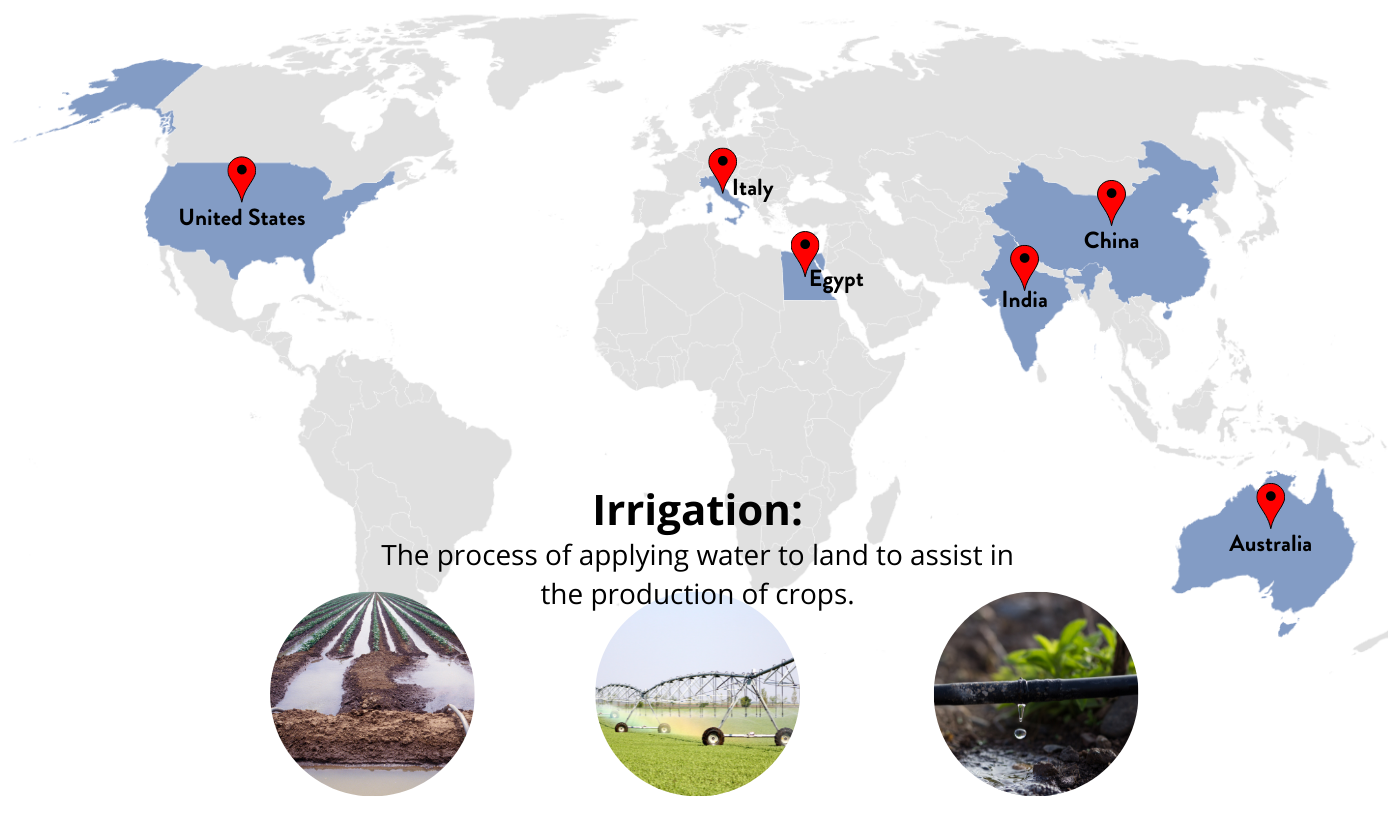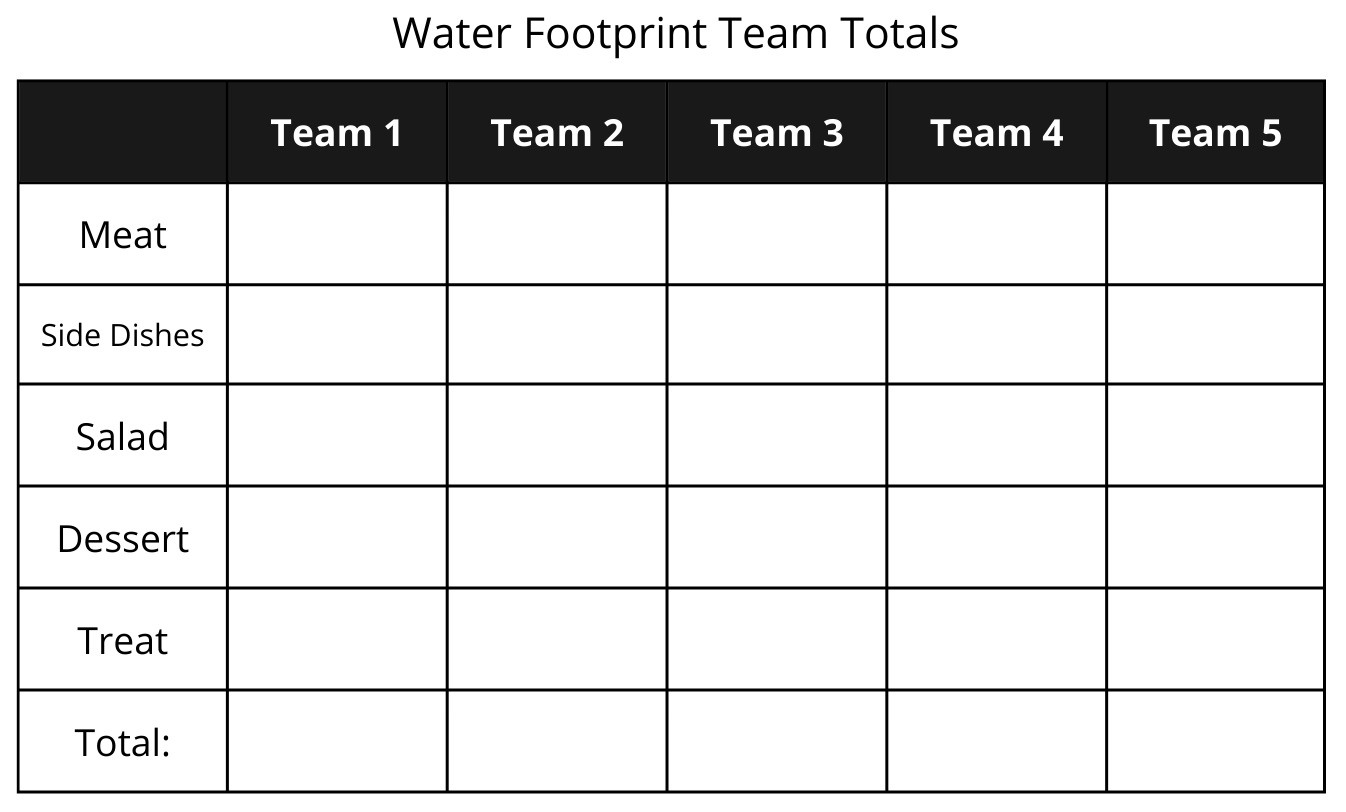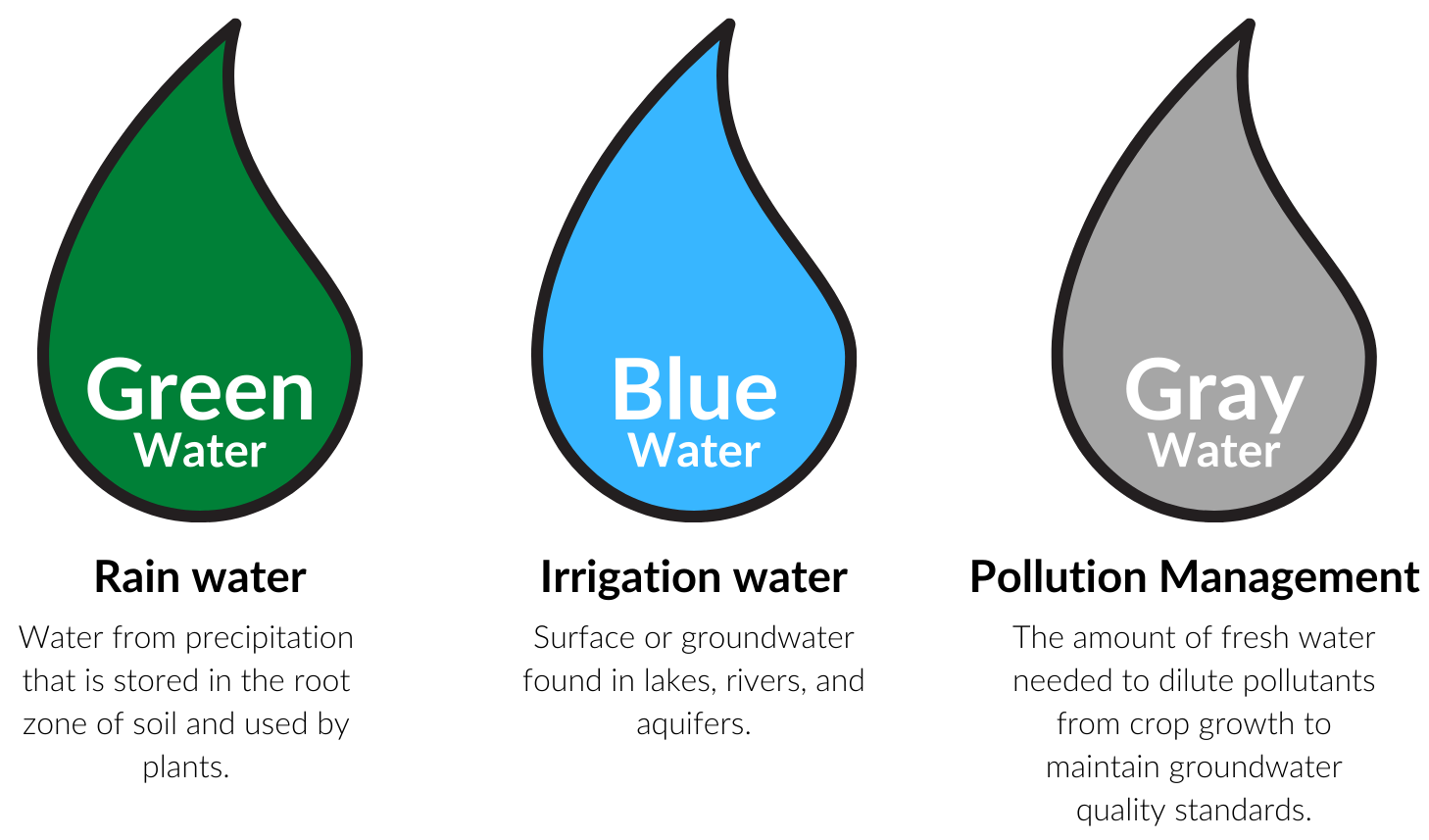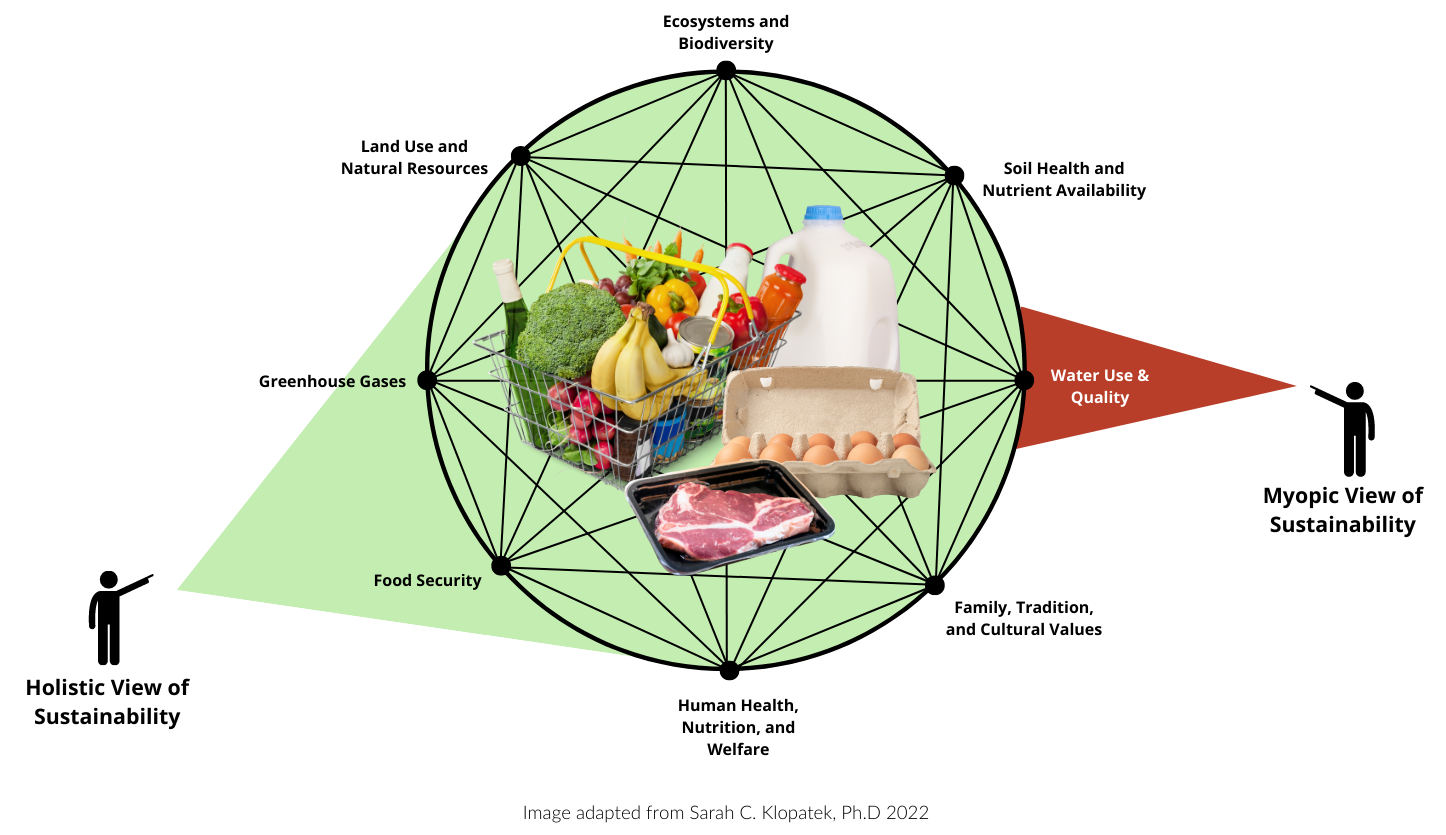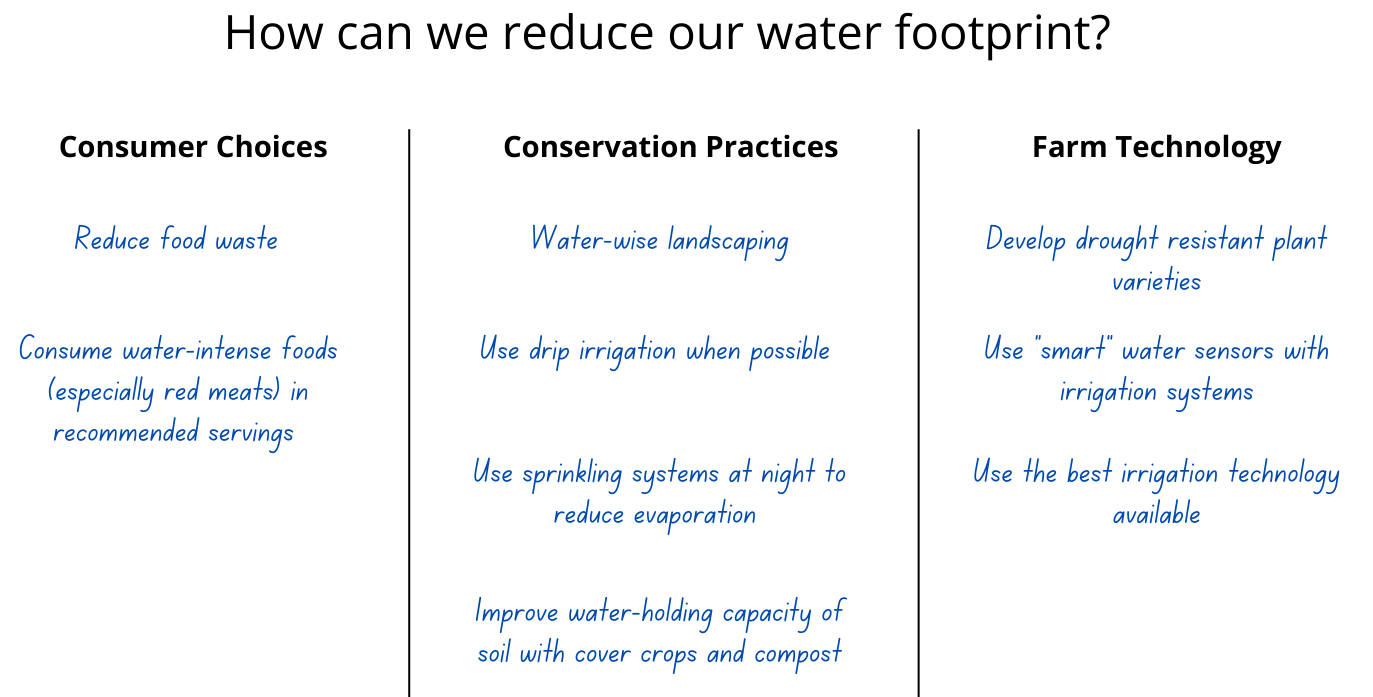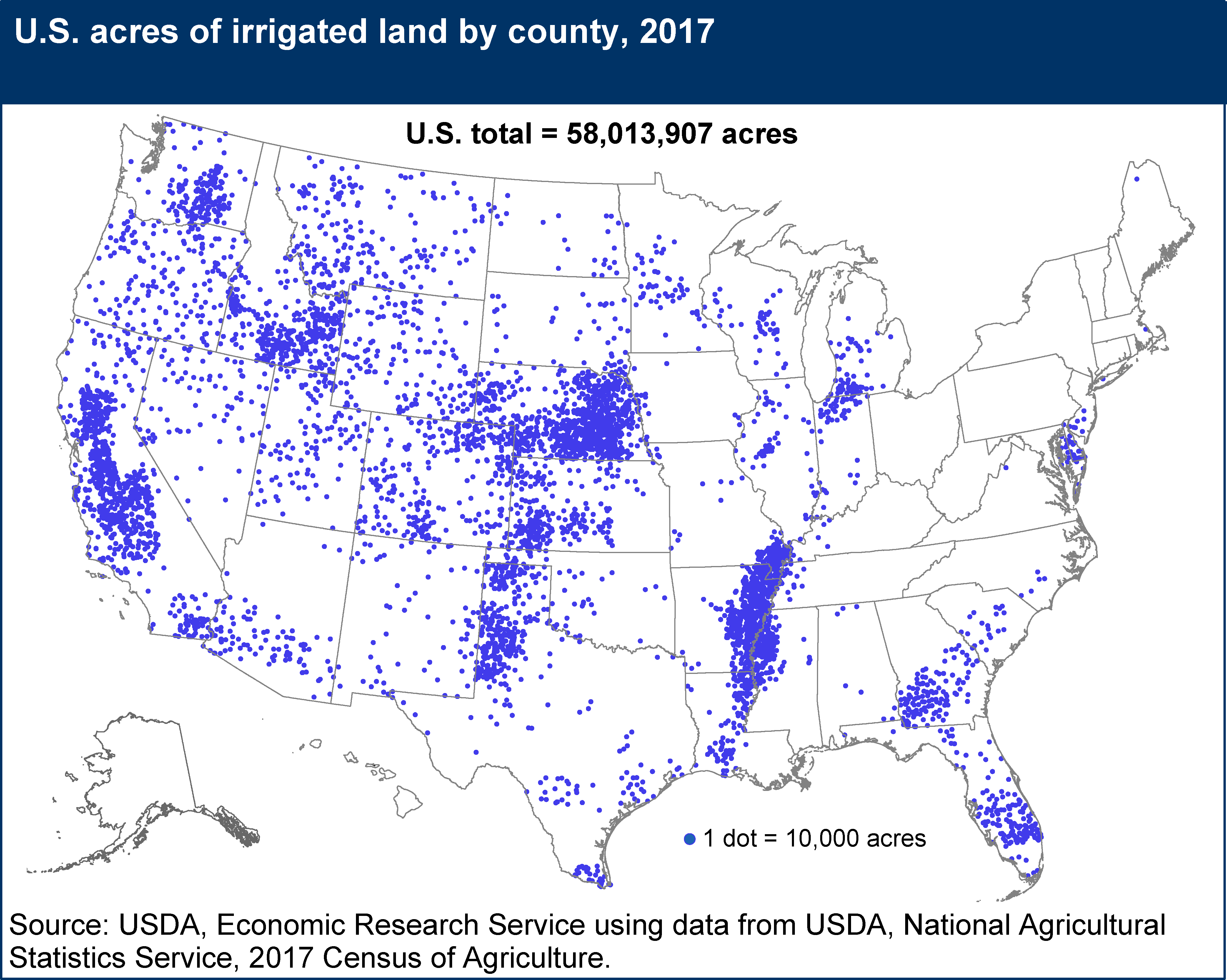The Water Footprint of Food
Explore concepts of sustainability by evaluating the water footprint (WF) of food. Students are introduced to irrigation practices throughout the world, consumptive and non-consumptive water use, and investigate the water requirements for various food crops.
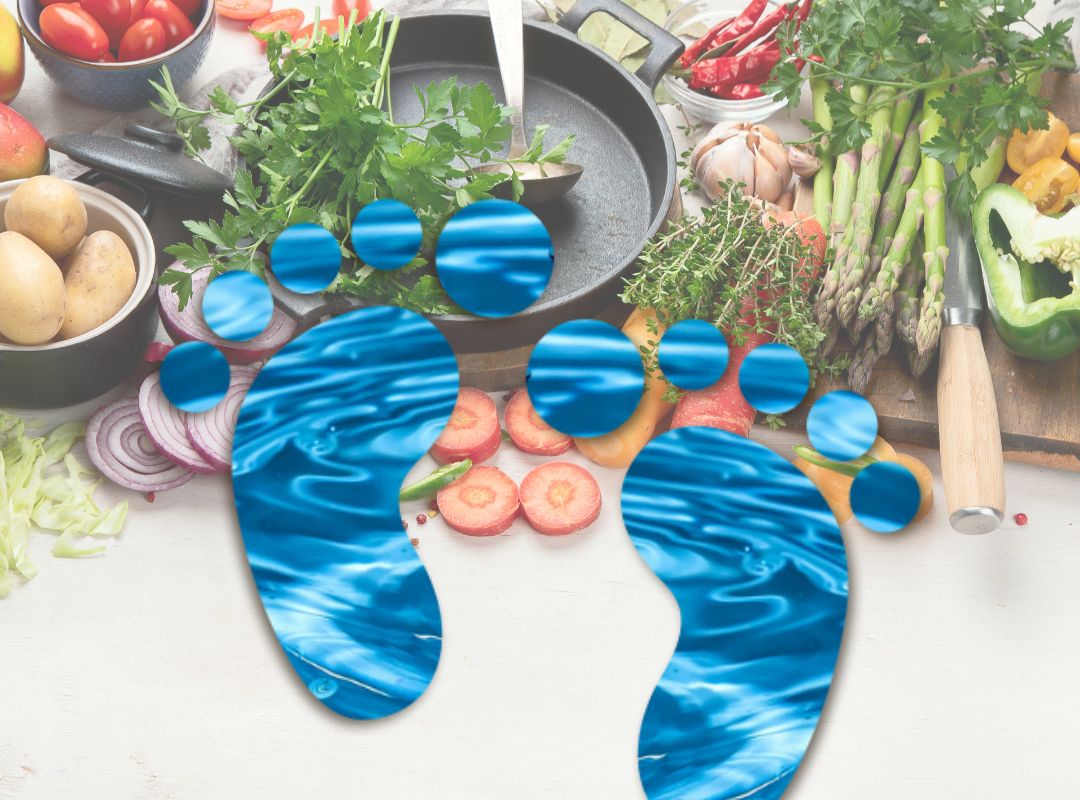
Background
Lesson Activities
Recommended Companion Resources
Credits
Author
Andrea Gardner and Denise Stewardson | National Center for Agricultural Literacy (NCAL)
Acknowledgements
Dinner Party Menu Challenge in Activity 2 used with permission from Dr. Philip Chaney, Department of Geosciences, Auburn University. See the article in The Geography Teacher journal, An Active Exercise on Sustainability and the Water Footprint of Food: The Dinner Party Menu Challenge.
Sources
- https://www3.epa.gov/safewater/kids/waterfactsoflife.html
- https://www.ers.usda.gov/topics/farm-practices-management/irrigation-water-use/
- Anisfeld, S. C. 2010 . Water Resources. Washington, DC: Island Press
- Feldman, D. L. 2012. Water. Malden, MA: Polity Press.
- Yates, J. J. 2012. Abundance on trial: the cultural significance of “Sustainability.” The Hedgehog Review14 (2): 8-25
- Hoekstra, A. Y. 2013.The water footprint of modern consumer society. New York: Routledge
- Hoekstra A. Y., and M. M. Mekonnen. 2012. The water footprint of humanity. Proceeding of the National Academy of Sciences (PNAS)109 (9): 3232-3237
- Hoekstra, A. Y. 2003. Virtual water trade. In Proceedings of the International Expert Meeting on Virtual Water Trade, ed. A. Y. Hoekstra. Value of Water Research Report Series No. 12. UNESCO-IHE, Delft, The Netherlands
- Hoekstra, A.Y, A.K. Chapagain, M.M. Aldaya, and M.M. Mekonnen. 2011. The water footprint assessment manual. Washington D.C., USA: Earthscan
- Water Footprint Network. 2017a. Aims and History. http://waterfootprint.org/en/about-us/aims-history (accessed October03, 2017).
- https://ourworldindata.org/water-use-stress
- https://www.nass.usda.gov/Publications/Highlights/2019/2017Census_Irrigation_and_WaterManagement.pdf
- An Active Learning Exercise on Sustainability and the Water Footprint of Food: The Dinner Party Menu Challenge
Standards
National Content Area Standards
- Career & Technical Education
- AFNR (Grades 9-12): Agriculture, Food, and Natural Resources Cluster Skills
- CS.04.01: Identify and implement practices to steward natural resources in different AFNR systems.
- FCSE (Grades 9-12): Nutrition and Wellness 14.0
- 14.1.4: Analyze the effects of global, regional, and local events and conditions on food choices and practices.
- AFNR (Grades 9-12): Agriculture, Food, and Natural Resources Cluster Skills
- Social Studies – Geography
- APHG Topic 5.10: Consequences of Agricultural Practices
- IMP-5.A.2: Agricultural practices—including slash and burn, terraces, irrigation, deforestation, draining wetlands, shifting cultivation, and pastoral nomadism—alter the landscape.
- APHG Topic 5.10: Consequences of Agricultural Practices
- Science
- HS-ESS3: Earth and Human Activity
- HS-ESS3-3: Create a computational simulation to illustrate the relationships among the management of natural resources, the sustainability of human populations, and biodiversity.
- HS-LS2: Ecosystems: Interactions, Energy, and Dynamics
- HS-LS2-7: Design, evaluate, and refine a solution for reducing the impacts of human activities on the environment and biodiversity.
- APES Unit 5: Land and Water Use
- EIN-2.N Ecological Footprints: Explain the variables measured in an ecological footprint.
- STB-1.E Sustainable Agriculture: Describe sustainable agricultural and food production practices.
- HS-ESS3: Earth and Human Activity
